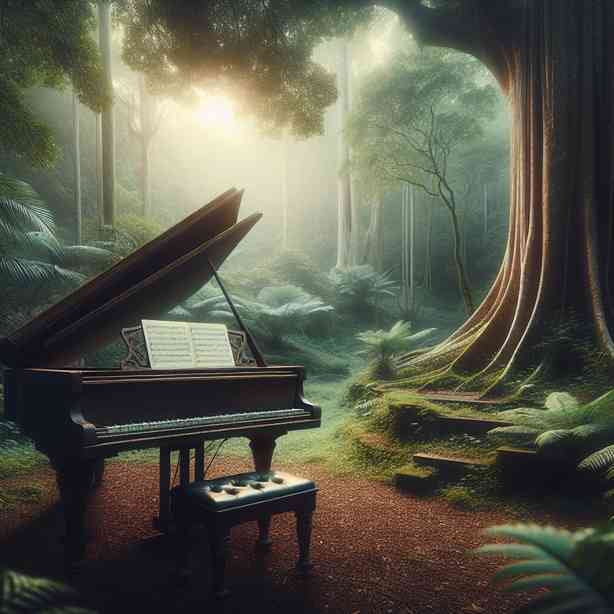
The beauty of silence is often overlooked in our fast-paced world filled with constant noise and distractions. However, there exists a unique genre of music and composition that embraces silence as a vital component of its art. This genre is often explored by composers who understand that what is not said or played can be just as powerful as melody or rhythm. Notable among them is John Cage, a seminal figure in avant-garde music who famously stated, “There is no such thing as an empty space or an empty time.” His work pushes the boundaries of how we perceive sound and silence, profoundly influencing both the musical landscape and our understanding of presence and absence in sound.
Cage’s most famous composition, “4’33”,” is a prime example of how silence can carry emotional and conceptual weight. In this piece, performers do not play their instruments for four minutes and thirty-three seconds, inviting the audience to focus on the ambient sounds around them—sounds that are often ignored in our daily lives. This work forces listeners to confront silence and recognize the myriad of sounds that fill it, thereby redefining their experience of music and listening itself. The concept reverberates through other art forms as well, encouraging artists and audiences alike to appreciate the subtle nuances of silence that surround everyday experiences.
The exploration of silence in music has unique implications for how artists approach composition, urging them to reconsider their methods and objectives. The intentional use of silence can alter the structure of a piece, create tension, and establish dynamic contrast. By incorporating pauses, rests, and moments of quiet, composers can cultivate a deeper emotional response from their audience. Silence becomes a canvas, allowing listeners to project their own thoughts and emotions onto the music, transforming the experience into something profoundly personal and subjective.
Moreover, silence in music is often aligned with spiritual and philosophical themes. Composers like Morton Feldman and Arvo Pärt utilize silence to convey deep introspection and transcendence. Feldman’s works often feature elongated silences, encouraging a meditative state within the listener, while Pärt’s minimalist approach evokes a sense of peace and reflection. In these compositions, silence serves not as an absence but as a presence that enhances the spiritual and emotional dimensions of the music.
In the realm of silence, the interplay of sound and quietness fosters an atmosphere ripe for innovation. Many contemporary composers experiment with ambient sounds and electronic elements to manipulate the boundaries of silence. This exploration highlights how technology can facilitate new forms of compositional expression, allowing for more immersive and engaging experiences. The integration of silence with sound can create a contrasting effect that captivates audiences, prompting them to explore their own interpretations of the material.
The artistic journey into the realm of silence is not limited to traditional classical music but extends into various genres, including rock, pop, and jazz. Musicians like Radiohead and Miles Davis have used silence strategically in their works, demonstrating its versatility and emotional potency across different musical expressions. The inclusion of silence in their compositions influences listeners’ perceptions of tension, anticipation, and resolution, often making the eventual return of sound feel even more impactful.
As we delve deeper into the realm of silence, we must also acknowledge its relevance in broader cultural and societal contexts. In our increasingly digital world, the constant barrage of information and stimulation can lead to a sense of overwhelm. The act of embracing silence can be a powerful antidote, offering individuals an opportunity to reflect, recharge, and reconnect with themselves and their surroundings. It is in these quiet moments that clarity can emerge, allowing for fresh ideas and perspectives to take root.
The significance of silence transcends the confines of music, extending into the realms of literature, visual arts, and even personal relationships. Writers like Virginia Woolf and Franz Kafka have employed silence as a narrative technique, illustrating the depth of character and emotion through what is left unsaid. Similarly, visual artists such as Yves Klein and Mark Rothko invite viewers to engage with the space around their works, prompting contemplation and introspection.
In the personal realm, silence can play a crucial role in fostering deeper connections between individuals. The ability to share a quiet moment with another person can enhance intimacy and understanding, creating a shared space for reflection and presence. In our fast-paced lives, cultivating these moments becomes increasingly important as we seek to slow down and appreciate the richness of human connection.
In conclusion, the artisans who are masters of silence—the composers, artists, writers, and thinkers—remind us of the beauty that lies in stillness and absence. Their works challenge us to rethink our relationship with sound and silence, beckoning us to consider the layers of meaning that can emerge from what is often dismissed. As we navigate our way through the complexities of modern life, let us take the time to listen not just to the music that fills the air, but also to the silence that envelops us, transforming those quiet moments into a source of inspiration, reflection, and beauty. Embracing silence allows us to connect more deeply with ourselves, with others, and with the world around us, revealing the profound truths that often lie beneath the surface.


